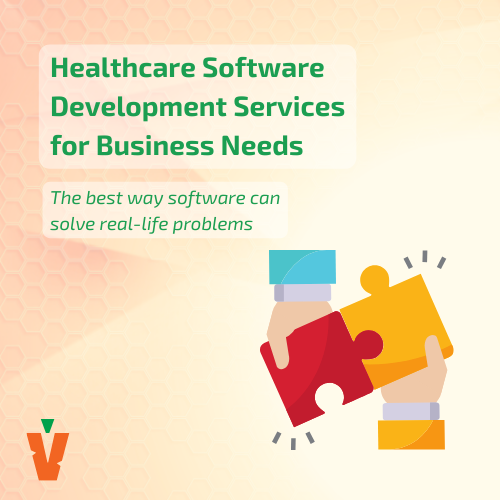The government and healthcare software developers are on the same page regarding ways to improve care for everybody. Today, we’re discussing federal goals for 2030 and ways we in the business can help achieve them.
The federal health IT strategy for 2024–2030 by the Office of the National Coordinator for Health Information Technology (ONC) is clear. Healthcare should benefit everybody equally, including underserved communities. We must advance infrastructure to improve research, accessibility, delivery, and outcomes.
The emphasis lies on building a better, safer, data-driven system with the help of technology — and the Vitamin team is on board.
The complete plan is available for public comment until the end of May. It’s a comprehensive document, but we’ve extracted the main points in this blog post. Keep reading to discover the ONC’s goals that will shape healthcare technology in the coming years.
1. Improve Healthcare Experiences and Outcomes
The first goal highlights individual, community, and population health. It’s divided into three objectives, all of which benefit from healthcare technology.
Empowering individuals to manage their well-being is all about building simple, standardized, patient-centric healthcare software. Apps and platforms should be secure, trustworthy, and full of educational resources to make medical topics accessible to the average person.
Boosting access to modern, equitable healthcare is another major objective. It reminds us that we should expand our datasets to accommodate minority populations. It also emphasizes the need for easy-to-use, low-requirements tech that suits everybody, not just the privileged.
Making communities safer is a big goal for federal health IT, and the government should standardize software to facilitate it. Tech solutions can be used to educate community members, while interoperability will improve access to data for NGOs and organizations that offer social programs. When combined, the individual-and systemic approach can improve outcomes on all levels of society.
2. Enhancing Care Delivery and Experience
The second ONC’s goal is care delivery — the government wants to improve relationships between patients, providers, and payers. The objectives revolve around safe, equitable, and improved care. Reducing the burden placed on providers and empowering care workers to use technology are other priorities related to healthcare software development.
When it comes to federal health IT provision, the ONC highlights security and interoperability. That way, PHI will be protected but accessible at all points of care, improving outcomes in all facilities. ONC now requires HIE networks to support FHIR, affirming it as the gold standard for interoperability.
Minimizing paperwork and ‘note bloat’ is already a basis of healthcare technology. The government will standardize data and processes, automating much of the administrative workflow. Responsible use of AI algorithms for this purpose also comes up.
3. Advancing Research and Innovation
The third federal health IT goal focuses on scientific innovation. The objectives include ensuring researchers access broad sets of healthcare data, which will improve their output. There’s also the goal to incorporate information on underrepresented populations to make new technologies more equitable.
Healthcare software development has a role in these goals. We can create tools to let individuals securely share information and ensure researchers can work on diverse data sets. We should also build healthcare data warehouses that allow this data to be stored and easily analyzed.
Artificial intelligence emerges again (we’ve discussed its regulation and use in a separate blog post). The idea is to use transparent algorithms that automate parts of research but prevent bias and black boxes.
4. Empowering Healthcare Systems With Data
The final goal of the federal health IT strategic plan affects policy and technology. Both should support the data needs of healthcare technology users. The objectives reflect this: boost IT capabilities, standardize data sharing, improve data protection, and integrate the federal healthcare system.
The first objective is good news for folks in healthcare software development. The government plans to provide resources in the public and private sectors to promote IT use. It’ll establish design principles and reduce barriers to innovation, making it easier to build quality technology in this industry.
Regarding standardized information sharing, the ONC is improving the TEFCASM interoperability framework. It also aims to participate in international interoperability initiatives, making it easier to share PHI worldwide.
Then, we have greater cybersecurity, extended HIPAA compliance, and a focus on predictive analytics. The healthcare sector, often notorious for its slow development, is finally gearing up for 21st-century technologies.
How Software Developers Can Support ONC’s Goals
Developers may support the objectives outlined by the Office of the National Coordinator for Health Information Technology. Federal health IT goals require robust, secure, user-friendly, interoperable technology solutions — we should hop on the bandwagon and make it happen.
Empowering individuals to take charge of their health necessitates simplified, patient-centric healthcare software. Through intuitive platforms with educational resources, individuals can easily understand and manage their health conditions. Moreover, providing secure software solutions fosters trust and encourages widespread adoption.
Universal access to modern and equitable healthcare is another area where developers may contribute. We can bridge accessibility gaps by expanding datasets and designing tools that cater to diverse populations. This involves creating interfaces that are inclusive, culturally sensitive, and adaptable to different languages and literacy levels.
Care delivery stands to benefit from improvements in healthcare software development. Tech companies can ensure that patient health information is protected yet readily accessible across different points of care.
Streamlining administrative workflows through automation reduces the burden on healthcare providers, leaving time for human connection and direct patient care. Additionally, the responsible integration of AI can enhance efficiency and accuracy in care delivery.
Finally, healthcare software development reinforces the goal of empowering systems with data. Embracing cloud-based services and enhancing cybersecurity measures ensures quality care for every segment of society.
Read more about building healthcare software with compliance and security in mind.
The Vitamin Software Approach
The Vitamin team keeps up with the latest tech trends, and we're picky about the projects we take on thanks to the Vitamin Sanity Check. We prioritize administrative health tech — stuff that makes operations smoother and more efficient. Building health tech that streamlines processes lets us contribute to government objectives.
We choose projects carefully to make sure they make sense financially and in terms of solving real business problems in healthcare. By doing this, we aim to use technology to improve how healthcare works behind the scenes, which ultimately means better patient outcomes.
Final Thoughts & Next Steps
The draft Federal Health IT strategic plan highlights the role of healthcare technology in advancing public health. Emphasizing the importance of infrastructure development and equitable distribution, it sets a foundation for leveraging technology to improve care experiences and outcomes for all.
We won’t lie — we like what we see in this plan. The industry struggles to adopt new technologies, and the ONC initiative will make it smoother. It’ll also allow developers to create standardized technologies used across the country.
Are you curious about ways to implement these goals and practices into your development efforts? Schedule a consultation with our expert leadership team. With 60+ successful projects under our belt, we’ve got the chops to advise or assist your in-house engineering team.


.png)

